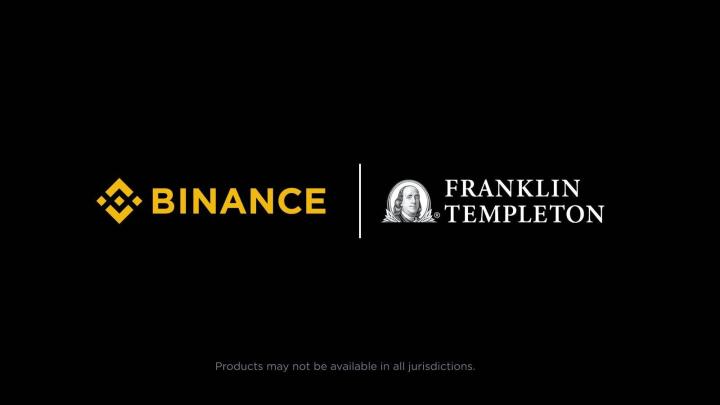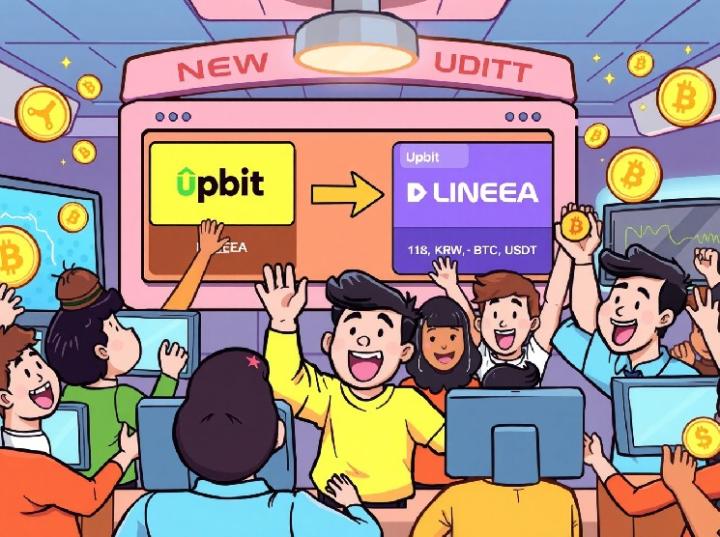Abstract: The trading volume ratio of DEX to CEX derivatives has reached a historical high, and Solana will benefit from this
Editor's Note: This article analyzes the main derivatives protocols on the Solana chain, including GMX-Solana, Jupiter Perps, and Drift, comparing their liquidity, trading volume, capital efficiency, and risk management. Jupiter and Drift have shown continuous growth but with lower capital efficiency, while GMX-Solana has higher capital efficiency but less liquidity. As protocols introduce better features and incentives, market competition will intensify, and with the derivatives trading volume ratio of DEX to CEX reaching a historical high, Solana will benefit.
Following is the original content (slightly edited for readability):
BitMEX launched perpetual contracts in 2016, since becoming an important part of the crypto derivatives market. Perpetual derivatives are futures contracts without an expiration date, meaning users won't be liquidated before adding margin. They allow users to go long or short on selected assets and provide the best leverage opportunities to define their risk tolerance.
The on-chain derivatives market has developed for years and successfully achieved product-market fit, first appearing on Ethereum and then expanding to other ecosystems. In these ecosystems, Solana perpetual contracts have been hugely successful, with @Jupiterexchange and @Driftprotocol becoming the main trading platforms.
Recently, GMX, one of the most important perpetual trading platforms on Arbitrum and Avalanche, also launched on Solana under the name @gmx_sol, another sign of the maturity of the Solana DeFi ecosystem. This research will analyze Solana's rapidly developing perpetual contract ecosystem, focusing on the two mainstream perpetual protocols on Solana - Jupiter and Drift, and the important EVM perpetual protocol GMX that recently landed on Solana.
2.3 Drift
·UI/UX: Compared to other platforms, Drift has richer features, making its interface relatively more complex.
·Fees: The fee rate ranges from 3bps to 10bps (0.03%-0.1%), with the specific rate depending on the user level (related to 30-day trading volume & the amount of $DRIFT staked in the insurance fund).
·Market Support: Offers 50+ perpetual contract trading pairs, far exceeding GMX-Solana and Jupiter Perps.
·Risk Control Mechanism: Drift classifies perpetual contracts by risk level and determines which trading pairs can use the insurance fund to protect LPs from losses.
·Oracle: Uses price data provided by @PythNetwork and @Switchboardxyz.
3. Liquidity & Trading Volume
Liquidity is crucial for any perpetual contract exchange. As the on-chain derivatives market grows, the liquidity and trading volume of these platforms continue to rise.

Perpetual Contract Protocols TVL on Solana

Due to the significant differences in TVL and trading volume among these protocols, a better comparison metric is capital efficiency, typically measured by 24H trading volume / TVL. This value reflects the utilization of the protocol's TVL on the exchange, i.e., how much capital generates fees and earnings for liquidity providers. If capital is not fully utilized, the efficiency is low.
A higher value indicates more efficient liquidity for the protocol. Although this value fluctuates based on market conditions and trader interest, a capital efficiency above 1 is generally considered ideal.
Currently, GMX-Solana's capital efficiency is around 0.59, while Jupiter and Drift are 0.38 and 0.15 respectively. GMX's capital efficiency is higher than Jupiter and Drift, partly because its current liquidity is lower.
Additionally, when calculating Drift's capital efficiency, we excluded the TVL of the platform's Strategic Vaults, as the funds in these vaults may not be directly used for trading. However, these funds are still included in Drift's total TVL.
Note: To avoid data bias due to single-day performance and market volatility, the above calculation uses a 7-day trading volume moving average / 7-day TVL moving average as the capital efficiency formula.

Another analyzable metric is Fees (24H) / TVL, calculated as 7-day fee moving average / 7-day TVL moving average. This value indicates how much of the protocol's fees are generated by locked liquidity.
GMX-Solana's value is 0.0002, Jupiter is 0.00097, and Drift is 0.00003.
In this metric, Jupiter generates the highest proportion of fees relative to its locked value.
3.1 GMX-Solana
GMX-Solana obtains liquidity from GLV (Global Liquidity Vault) and GM pools. The GLV pool is optimized for returns and rebalanced according to market conditions, with liquidity allocated based on demand. Not all markets obtain liquidity from GLV. In contrast, GM pools are isolated pools for users focusing on specific assets. These pools earn fees through perpetual and spot markets. Currently, GLV provides about 6% APY.
Most of the platform's active liquidity comes from GLV, as specific GM pools have much lower APY, usually between 1-5%, and have thin liquidity.
Additionally, due to insufficient liquidity, decreased trader interest, and market volatility, GMX-Solana currently fails to capture most of the on-chain trading volume on Solana.


3.2 Jupiter Perp
Jupiter Perp's liquidity comes from the JLP token, an index fund consisting of SOL, ETH, wBTC, USDC, and USDT. JLP accumulates value through fees generated by Jupiter Perps. JLP is an excellent choice for liquidity provision, offering flexibility for providers to easily add or remove liquidity.
At the time of writing, JLP provides a 10% annual yield.

3.3 Drift
Drift's liquidity comes from multiple channels, as outlined in the overview. Since users can provide liquidity through different methods, the annual yield varies for each method.
The platform offers the highest APY of 338% through Strategic Vaults, managed by external parties. Other pools, including lending pools and insurance funds, provide 10-15% APY.
LPs can also provide liquidity through BAL, where they automatically open opposing positions for traders and earn fees from the market's funding rate. Additionally, 80% of the collected order fees are distributed to BAL providers, bringing their annual yield to 10-25%, depending on the market in which they provide liquidity.

4. Risk Management
Risk management is crucial in every perpetual contract exchange. Although risks associated with smart contracts typically remain, an ideal risk management protocol should efficiently settle positions during highly volatile market conditions and minimize damage to liquidity providers.
4.1 GMX-Solana
GMX-Solana has two types of markets: fully collateralized markets and synthetic markets.
Each GMX-Solana market contains 3 tokens:
·Index token
·Long token
·Short token
Long and short tokens jointly support the market. Long tokens support long positions, while short tokens are typically stablecoins supporting short positions.
The index token is the token users use to long or short. However, it's worth noting that GMX-Solana also supports collateralizing only one token in a specific market, which may pose risks to short positions.
When the long token and index token are the same, the market is fully collateralized, meaning traders' profits and losses can be quickly settled in highly volatile market conditions. In synthetic markets, long and index tokens differ, which may cause settlement issues during high volatility.
To ensure efficient profit and loss settlement, GMX-Solana uses an Automatic Deleveraging (ADL) mechanism that partially or completely closes certain profitable positions to maintain market solvency.
To manage risks, protect liquidity providers, and maintain pool balance, multiple fees are involved, including:
·Price impact fee: Paid when LPs or traders cause pool imbalance
·Dynamic lending fee: Paid by traders to LPs for borrowing assets from the liquidity pool
·Funding fee: A fee that incentivizes the market's other side to trade in the opposite direction
These fees are crucial for incentivizing liquidity providers and protecting the exchange in case of solvency issues.
4.2 Jupiter Perps
Jupiter Perps works similarly to GMX-Solana, with the only difference being that it does not allow synthetic markets where the long backing token differs from the index token. This further protects the exchange and positions, maintaining stability even in highly volatile conditions.
4.3 Drift
Drift adopts a different approach by utilizing a hybrid liquidity model. Drift uses an insurance fund to manage risks and efficiently maintain the exchange's solvency. The insurance fund accumulates funds through protocol revenue, liquidations, and trading fees. Since BAL is an automated market maker (AMM), LPs may be prevented from burning their shares when the pool becomes unbalanced.
5. Current State and Future Trends
Currently, most derivatives liquidity is concentrated on Solana, with Jupiter and Drift being the main contributors. As of now, Solana accounts for approximately 52% of the total on-chain derivatives liquidity, around $2.7 billion, while the total liquidity is $5.2 billion.

Currently, the trading volume of Solana perpetual contracts is led by Jupiter, followed by Drift. GMX-Solana still has a long way to go in challenging existing market competitors.

The on-chain derivatives market is experiencing unprecedented prosperity, with increasingly fierce competition between protocols, launching many outstanding products. The DEX to CEX trading volume ratio is rising, currently around 7%, which means there is still significant room for growth.

Solana is the second-largest chain in terms of on-chain derivatives trading volume. Hyperliquid's trading volume is vastly different from other chains. As the industry develops and Solana protocols introduce better features and incentives, this gap will eventually narrow. With improved throughput through the Firedancer validation client, Solana protocols can achieve speed and efficiency comparable to competitors.
6. Conclusion
Jupiter and Drift show continuous growth patterns but lack capital efficiency. Although GMX-Solana has a slight advantage in capital efficiency, partly due to lower liquidity, it still needs to catch up.
Jupiter drives simplicity through its JLP token, where LPs can buy and hold JLP to provide liquidity for the platform. While GMX and Jupiter follow similar patterns in handling transactions, they differ in liquidity handling, with less similarity between GLV and JLP.
Drift offers cross-margin accounts for advanced traders seeking better risk allocation. It allows lower leverage and focuses on risk management by incentivizing the insurance fund.
Currently, the DEX to CEX derivatives trading volume ratio is at a historical high. As Solana is the most important liquidity contributor in the on-chain derivatives market, its ecosystem will benefit from the trading volume generated in this segment.
Welcome to join BlockBeats official community:
Telegram Subscription Group: https://t.me/theblockbeats
Telegram Communication Group: https://t.me/BlockBeats_App
Twitter Official Account: https://twitter.com/BlockBeatsAsia







